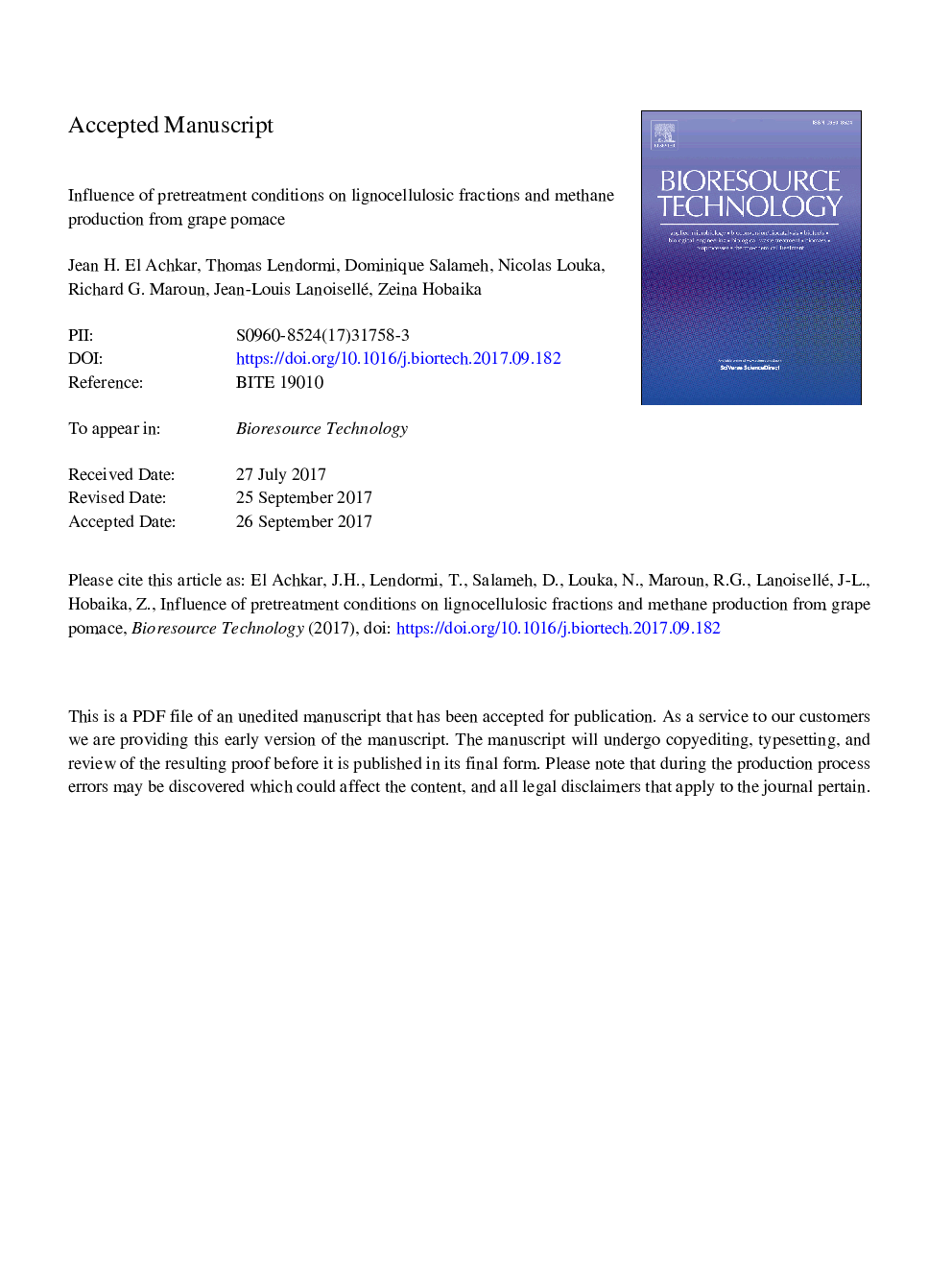| Article ID | Journal | Published Year | Pages | File Type |
|---|---|---|---|---|
| 7069569 | Bioresource Technology | 2018 | 32 Pages |
Abstract
The lignocellulosic structure of grape pomace requires the use of pretreatments facilitating microbial decomposition of the matter and enhancing methane production. In this study, the effects of various pretreatments (freezing, alkaline treatment using NaOH and NH3, acid treatment using HCl, ultrasounds and pulsed electric fields) were examined in batch mode. The highest methane production (0.178 Nm3 kgâ1 of COD) was attained after alkaline treatment with 10% NaOH w/w dry basis, at 20 °C and for 24 h. This result is due to the degradation of more than 50% of lignin and about 22% of cellulose present in grape pomace. The coupling of this pretreatment with freezing at â20 °C exhibited the highest methane production of 0.2194 ± 0.0007 Nm3 kgâ1 of COD. When applied to a larger scale continuous digester, this coupled pretreatment increased methane production by about 27%, compared to the untreated samples, promoting the green valorization of the biomass.
Keywords
Related Topics
Physical Sciences and Engineering
Chemical Engineering
Process Chemistry and Technology
Authors
Jean H. El Achkar, Thomas Lendormi, Dominique Salameh, Nicolas Louka, Richard G. Maroun, Jean-Louis Lanoisellé, Zeina Hobaika,
